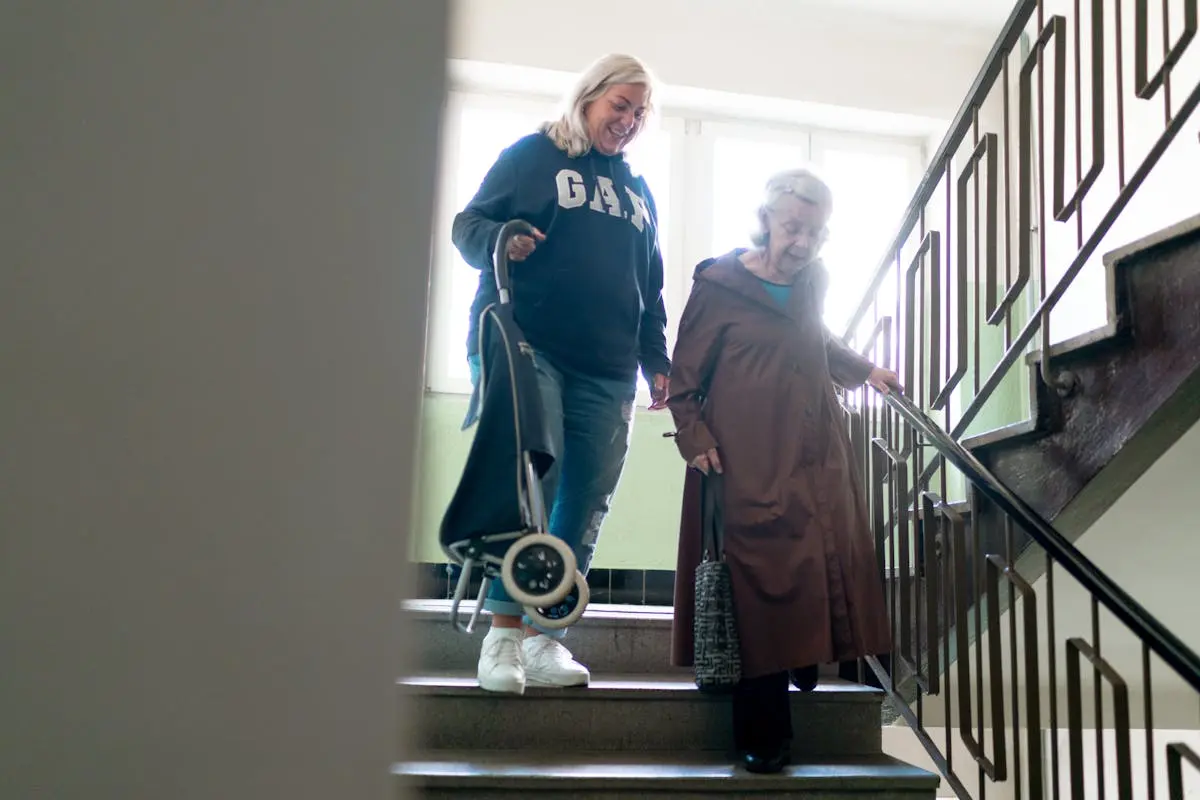As seniors seek to maintain their independence, creating a safe and accessible living environment becomes crucial. Home modifications can significantly enhance the comfort and functionality of a space, allowing seniors to live on their own terms. In this list, we will explore essential modifications that can aid in promoting independent living.
1. Creating an Open Floor Plan
An open floor plan can significantly enhance mobility and accessibility for seniors. By removing unnecessary walls, the flow from room to room is improved, minimizing the risk of tripping over furniture and obstacles. This design allows seniors to move freely from the living area to the kitchen or dining space without navigating tight corners or cramped passages. An open layout also aids in increased visibility, making it easier for seniors to keep an eye on family members who may be present.
Another benefit to an open floor plan is the promotion of social interactions, essential for maintaining mental health in seniors. With the ability to engage with family or friends while cooking or relaxing, the sense of community and connection is preserved.
2. Installing Grab Bars in Key Areas
Installing grab bars in bathrooms and hallways is one of the simplest yet most impactful modifications for promoting independent living. These bars provide crucial support when seniors maneuver in slippery areas like the shower or while transitioning from standing to sitting. The installation should be strategically placed at the right height and location to maximize their effectiveness, ensuring that seniors can grip onto them easily when needed.
Not only do grab bars enhance safety, but they also offer seniors the confidence to perform daily tasks without fear of falling. This newfound confidence can lead to greater independence, as they can wash, dress, and move about their home without needing constant assistance. Investing in attractive grab bars can also enhance the home’s aesthetics, ensuring that safety features blend seamlessly with the decor.
3. Improving Lighting with Motion Sensors
Proper lighting plays a vital role in ensuring the safety and well-being of seniors. Improving lighting with motion sensors can significantly reduce the risk of accidents, especially during nighttime hours. These sensors automatically illuminate areas when someone approaches, illuminating pathways, hallways, or often-used spaces like the bathroom. This feature eliminates the need for fumbling for light switches, particularly beneficial for those with mobility challenges.
Well-lit areas can ease anxiety for seniors, especially those who experience disorientation during evening hours. Adequate lighting can also deter potential intruders, offering an additional layer of security. By making these simple upgrades, families create an environment that is not only safer but also more conducive to independent living.
4. Replacing Traditional Doorknobs with Lever Handles
Replacing traditional doorknobs with lever handles is an excellent modification for seniors suffering from arthritis or limited hand strength. Lever handles require significantly less force to operate, making them accessible even for those experiencing physical challenges. This small change can make a significant difference in a senior’s daily life, allowing them to open doors effortlessly without additional help. By choosing lever styles that are aesthetically pleasing, homeowners can ensure that functionality does not compromise style. Making this modification not only enhances independence but also elevates the overall charm of the home.
5. Upgrading the Bathroom for Safety
The bathroom is often a challenging environment for seniors, making upgrades for safety a top priority. Installing a walk-in tub or a low-threshold shower can dramatically reduce the risk of slips and falls. These features not only provide easier access but also promote a sense of dignity, empowering seniors to maintain their bathing routines independently.
In addition to bathing fixtures, consider adding a shower seat and a handheld showerhead. This combination allows seniors to bathe comfortably while reducing the physical strains associated with standard showers. Non-slip mats and grab bars complete the safety upgrade, creating a space where seniors can feel secure while attending to personal hygiene—a fundamental aspect of independent living.
6. Installing Accessible Kitchen Features
The kitchen is often considered the heart of the home, and making it accessible for seniors can greatly enhance their independent living experience. Installing pull-out shelves and easy-to-reach cabinetry can reduce the need for reaching or stretching, which can be dangerous for seniors. By optimizing storage solutions, seniors can access their kitchen essentials without risk of injury.
Additionally, incorporating appliances with user-friendly controls, such as wall ovens and side-opening refrigerators, can also facilitate independence. These features alleviate the challenge of bending down or reaching up high to cook or retrieve food. Further, using bright colors for countertops and other surfaces creates contrast, making it easier to distinguish between kitchen items—an often-overlooked aspect that can significantly support independent living.
7. Adding Non-Slip Flooring
Choosing non-slip flooring is a crucial modification that can drastically reduce the chances of falls in the home. Whether it’s in the living room, kitchen, or bathroom, flooring material that provides grip can enhance safety for seniors considerably. Materials such as textured vinyl, rubber, or treated wood can be both slippery-resistant and aesthetically pleasing, ensuring the home remains inviting.
Maintaining consistent flooring throughout the home can reduce trip hazards caused by transitioning between different floor types. This uniformity not only enhances safety but also creates a seamless flow throughout the living space, promoting an open and inviting atmosphere. Such modifications support seniors in their pursuit of independent living, allowing them to navigate their homes with confidence.
8. Implementing Smart Home Technology
Smart home technology has emerged as an impactful way to promote independent living for seniors. From voice-controlled assistants to automated lighting systems, these advancements simplify daily tasks and improve overall safety. For example, with smart speakers, seniors can control lights, thermostats, and even security systems using simple voice commands, which is especially beneficial for those with mobility restrictions.
Additionally, smart security systems can provide peace of mind by allowing seniors to monitor their homes from anywhere via mobile devices. Features such as doorbell cameras and motion sensors empower seniors to feel secure while remaining independent. The integration of technology not only enhances their autonomy but also allows for remote monitoring by family members, fostering a sense of support without being intrusive.
9. Creating an Outdoor Living Space
Creating an outdoor living space can provide seniors with a sense of connection to nature while promoting well-being. Whether it’s a small garden, a cozy patio, or an accessible deck, having the opportunity to spend time outdoors can uplift the spirits and encourage physical activity. Consider adding comfortable seating options and shaded areas to ensure a pleasant atmosphere, allowing for relaxation and enjoyment.
Incorporating raised garden beds can also encourage gardening, a therapeutic activity that fosters physical engagement and mental wellness. Accessible pathways, free of obstructions, further enhance the experience, allowing seniors to navigate their gardens or outdoor spaces with ease. These outdoor modifications create a harmonious living environment that supports not just independence but also enhances the overall quality of life.
10. Using Color Contrast for Visual Aid
Using color contrast can significantly aid seniors in navigating their homes independently. High contrast between walls, floors, and furnishings can help distinguish different areas of the home, reducing the likelihood of accidents. For instance, identifying the edges of steps or doorways with contrasting colors creates visual cues that guide seniors and enhance their spatial awareness.
In addition, contrasting colors can make everyday items, such as switches and controls, easier to locate. This simple modification can lead to greater confidence in movement, allowing seniors to move freely without constantly seeking help. Incorporating thoughtful color choices into the home design maximizes safety while maintaining a visually pleasing environment.
11. Enhancing Security Features
Enhancing security features in the home is essential to ensure a safe living environment for seniors. Simple modifications such as reinforced doors, window locks, and illuminated entryways can significantly improve safety and peace of mind. Many seniors live alone, making it imperative that they feel secure in their surroundings, and these enhancements provide an important layer of protection.
Beyond physical security, integrating technology can be tremendously beneficial. Installing video doorbells and smart locks offers an added sense of control, allowing seniors to know who is at the door and manage access without leaving their homes. These advancements can empower seniors, enabling them to live independently while still feeling safe.
12. Evaluating Home Maintenance Needs
Regularly evaluating home maintenance needs is a vital aspect of promoting independent living for seniors. Over time, homes can develop wear and tear that, if left unaddressed, may lead to safety issues or hinder mobility. Creating a routine inspection checklist can help families identify potential hazards—such as loose flooring, worn-out railings, or outdated appliances—and address them proactively.
It is essential to maintain open communication between seniors and their loved ones regarding any new challenges they may face. By staying attuned to their changing needs, families can make timely upgrades or repairs, ensuring that the home remains a safe haven where seniors can maintain their independence. Regular maintenance not only enhances safety but also promotes longevity in the home, allowing seniors to thrive in their living environments.
Remember to consult with professionals and take your time in making the right choice to ensure peace of mind for you and your loved ones. Reach out to the experts at Atlantic Allcare, Inc., a home health care agency that has been assisting seniors in Broward and Palm Beach for over 35 years, and can be reached at 954-427-4546 or 561-912-9511, or at www.atlanticallcare.com.





